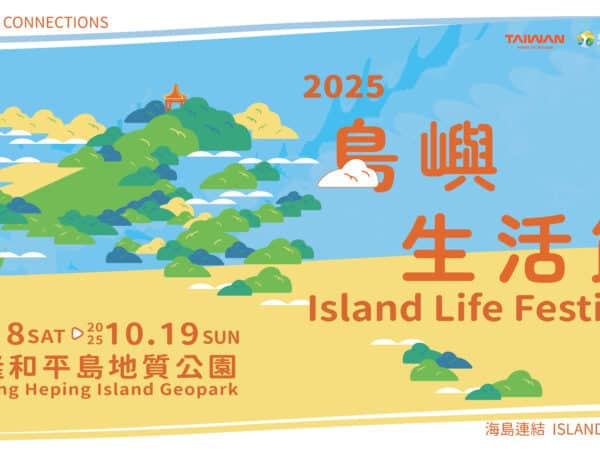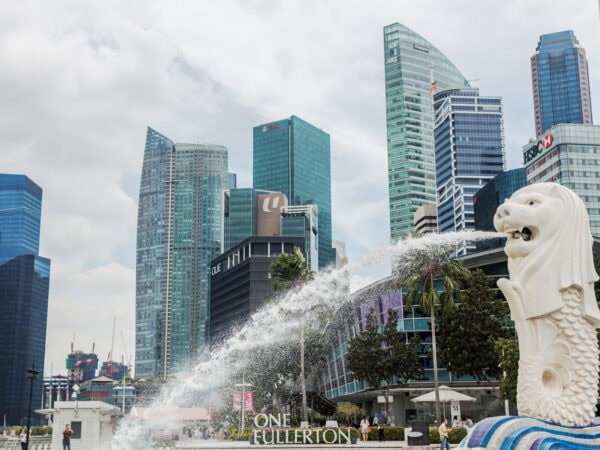文/謝爾庭 Writer/Hsieh Er Ting
攝影/陳繼遠 Photographer/Chen Chi Yuan
台灣各領域都有非常優秀的工藝創作者,然而,許多創作者除了舉辦展覽,並未主動以商業方式行銷、展售作品,限制了作品對於一般大眾的影響力。切入一般人不熟悉的藝術領域,甚至幫助推動市場,不是件容易的事。創立於2010年的MANO慢鏝,是台灣少數以「當代首飾」為主題的策展及選品空間,期望能以商業手段促成當代首飾及金工領域產業鏈的進一步發展。
There are many outstanding craft-creators in every field. However, besides exhibitions, many creators lack artwork marketing skills, limiting public influence. It isn’t easy to cut into a non-mainstream art field, and even help develop the market. Established in 2010, MANO is one of the few contemporary jewelry studios that combines curation and select shop. MANO hopes to contribute to the development of the contemporary jewelry field and metalworking industry.

本次專訪邀請到MANO慢鏝品牌創辦人謝旻玲,分享自己對策展及商業選品的想法。此外,也從在台灣推廣當代首飾的經驗,說明市場教育的重要性,提供給不論哪個領域的工藝創作者參考。
In this interview, Min-Ling Hsieh, the founder of MANO, will share her insights on curation and select shops. Also, she will explain the importance of educating the market, providing future references for every creator.
用心手造,慢慢創作
Made by Hand, Slowly and with Hearts
謝旻玲創辦人過去曾在德國修讀傳統與當代首飾藝術,回台後,她觀察到台灣的金工創作者往往埋頭創作,不擅行銷。即使舉辦展覽,結束後作品就消聲匿跡,導致一般大眾對金工領域相當不了解,甚至以為金工是做手錶的。
Min-Ling majored in both traditional and contemporary jewelry in Germany. After returning to Taiwan, she noticed that metalworking creators in Taiwan often immerse themself in creation, and are weak in marketing. Even in exhibitions, the artworks often “disappear” afterward, which leaves the public unfamiliar with metalworking. Some even think it is about making watches.
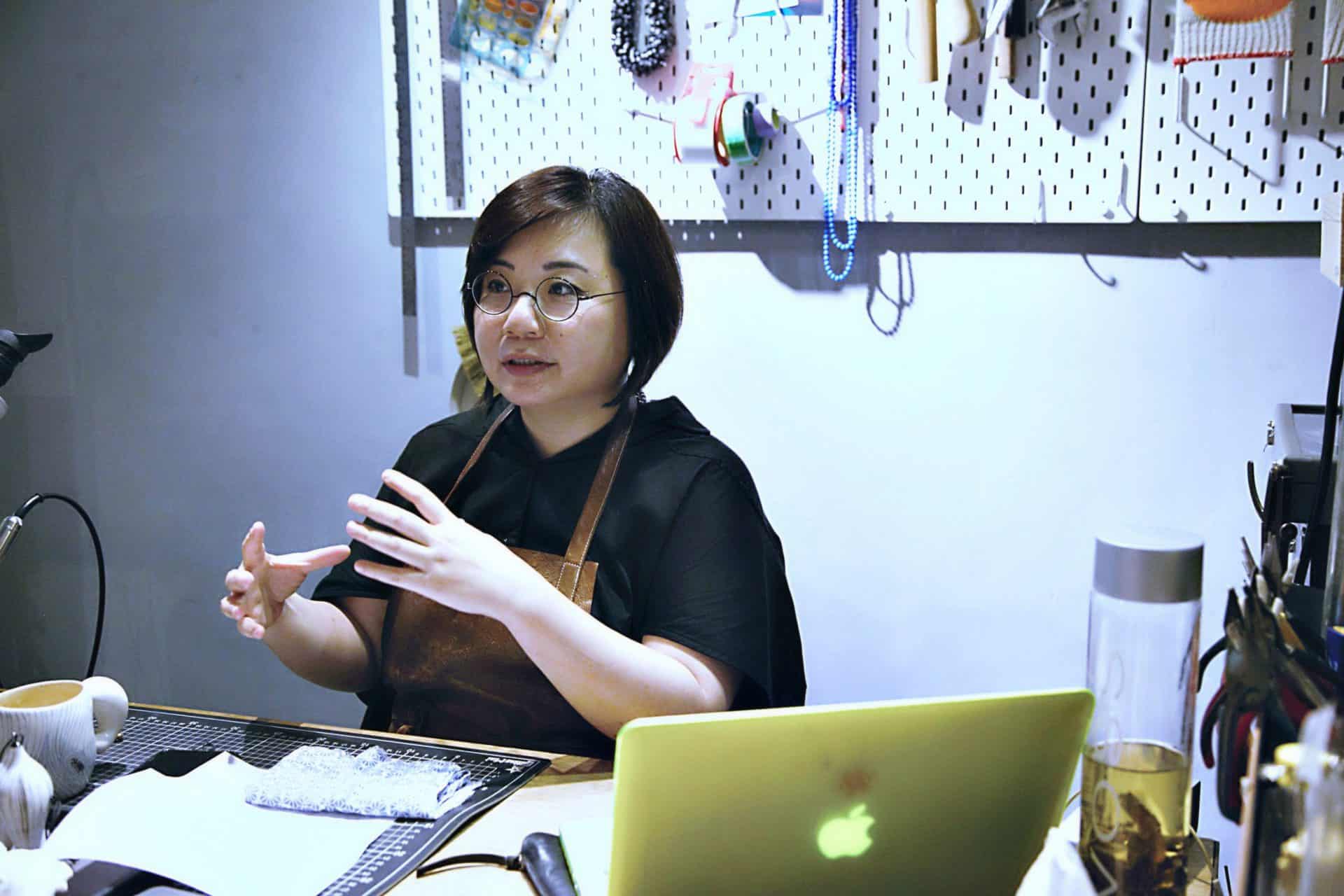
作為圈內人,旻玲很清楚每件金工創作都蘊含獨特理念,需要熟悉的人進一步介紹。然而,相較於一般平面繪畫有較完整的藝廊展售體系,金工領域在這一塊相當缺乏。因此,她與當時的夥伴,在2010年創立了MANO慢鏝,希望從策展及選品出發,最終讓當代首飾這項工藝廣為人知。
As an insider, Min-Ling understands that every metalworking creation bears unique concepts. It takes trained experts to introduce further. However, metalworking crafts lack a complete system of artwork dealers like paintings. Therefore, she established MANO with a partner in 2010, starting from curation and selecting, and hopes to make contemporary jewelry a popular art form eventually.
「手造」是MANO慢鏝品牌的核心理念。MANO就是義大利文「手」的意思,後面兩個中文字「慢」及「鏝」則分別象徵內心跟工具。慢下來,讓手、心、工具三件事情合而為一,是MANO慢鏝的品牌精神。
“Handmade” is the core value of MANO. MANO stands for “hand” in Italian, and “慢” 及 “鏝” represent the heart and tool in metalworking. Combine hands, heart, tools, and slow things down, that’s the brand spirit for MANO.
以策展傳導當代首飾價值
Coveying Contemporary Jewelry’s Value Through Curation
相較於傳統金銀首飾強調加法概念,當代首飾揚棄一般首飾的外顯價值,更關注於其中的創作哲學。這樣的論述對一般大眾而言較為陌生,因而,策展成為傳導價值的重要管道。
In contrast with traditional gold & silver jewelry, which emphasizes the concept of “addition,” the contemporary jewelry withdraws the outer value and concerns the creation philosophy more. Such discourse is unfamiliar to regular people. As a result, curation becomes the main channel to covey such values.
以日本藝術家永野和美的作品為例:永野和美擅長使用紙質等軟性媒材及編織技法,創作千變萬化的作品。例如以書紙做成的首飾,雖然不若金銀等貴金屬金光閃閃,卻更加內斂,透露出純粹的美學觀念。兩年前旻玲邀請永野和美來台舉辦個展,造成轟動。不僅展覽大獲好評,作品更被搜括一空。
Takes Japanese artist Kazumi Nagano as an example, Nagano experts in using soft materials like paper, combining with textile techniques to create ever-changing artworks. Take the ornaments of book papers, for example. It reveals a purely aesthetic concept, with a more restrained feature than the shining gold & silver material. Two years ago, Min-Ling invited Nagano to held a solo exhibition in Taiwan and caused a great sensation. Not only did they received excellent reviews, but the artworks were also sold out.
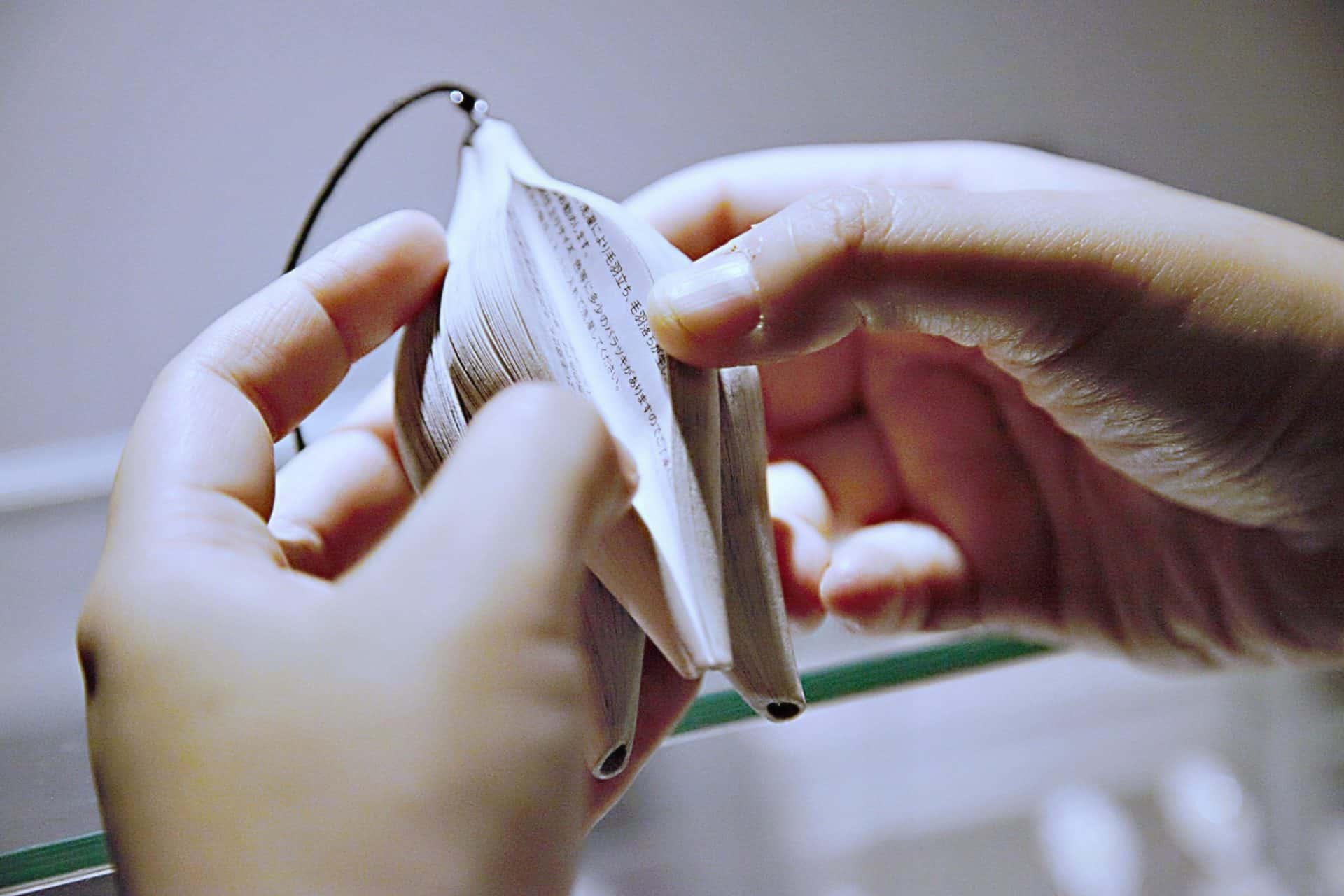
旻玲認為,唯有傳導新的價值論述進入市場,不斷教育顧客,才能逐步讓當代首飾的價值被彰顯。也因此,近年來旻玲當代手造價值從學術單位拓展開來並開始嘗試與私人企業的連結。
In Min-Ling’s view, contemporary jewelry’s value can only be revealed by coveying the new value discourse into the market and continuously educating customers. As a result, Min-Ling’s have moved beyond Academic institutes and tried to build more connections with private firms.
MANO慢鏝也時常在策展上,透露出跨界企圖。例如江河創作時間高度濃縮的花道與日常器皿,讓觀眾觀賞花道家的現場展演,從選擇植物一路到器皿擺設。對旻玲來說,策展首重空間氛圍的營造,提供給來訪客人完整的觀展體驗,進而理解作品背後的想法,慢慢理解當代首飾的價值。
Regarding the curation, MANO discloses the ambition of cross-overs. For instance, MANO combines Japanese ikebana, a highly time-compressed art form, with daily vessels and demonstrates a live performance to the audience, from selecting plants to the furnishing. For Min-Ling, creating the right atmosphere is critical in curation. She wants to provide a complete experience for the visitors to understand the concepts of artworks and, finally, the value of contemporary jewelry.
重視價值勝過價格:商業模式與定價策略
Value, not Prices: The Business Model and Pricing Strategy
從最一開始,MANO慢鏝就設定為商業性的品牌,並以作品展售為主要商業模式。除了在台北紹興南街的選品店外,謝旻玲也開始嘗試尋找其他的藝術空間的合作。例如近期她個人與高雄金馬賓館的展覽合作,將藝術帶入飯店空間,善用人流創造進一步效益。
From the very beginning, MANO has positioned itself as a business brand, with artworks dealing as the primary business model. Aside from the select shop in Shaoxing South Street, Taipei, MANO begins to cooperate with other art spaces. For example, recently, she personally starts a project with ALIEN Art Centre, Kaohsiung, brings modern art into hotels and benefits from the flow of people.
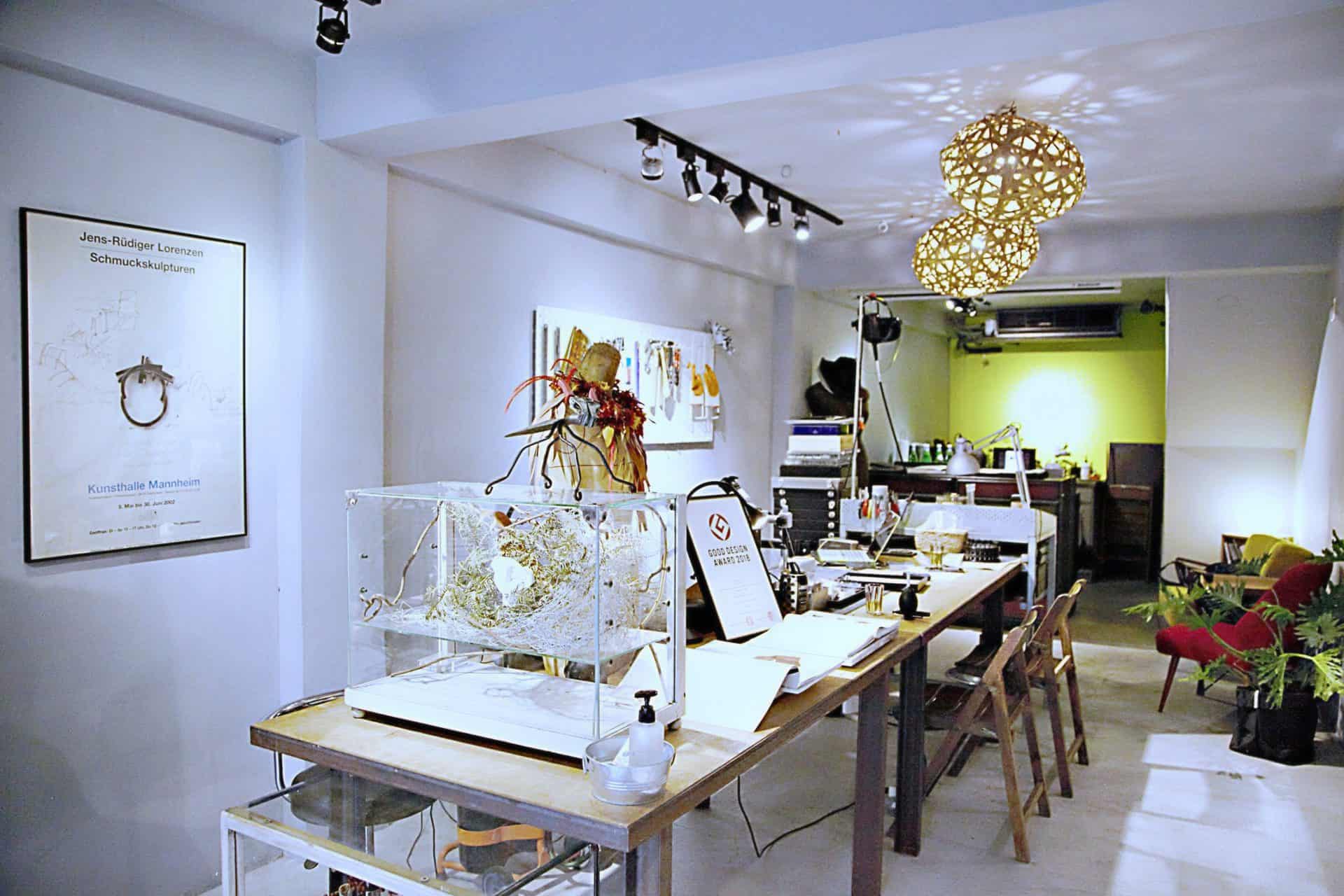
選品策略上,MANO慢鏝特別強調作品故事及精神,期望「人如其作」,反映每件作品的創作歷程。這樣的原則也反映在定價策略上:比起價格,MANO慢鏝更在意作品背後的價值。「顧客並不是便宜的東西就會買。」MANO慢鏝選品的價位並不低,但只要作品足夠特殊,價值能被認同,就有成交的機會。例如旻玲就曾遇過看慣珠寶名牌的高端消費者,慕名來到MANO慢鏝挑選別處找不到的獨特首飾。
The selection strategy of MANO highlights the story and spirits behind artworks. MANO hopes to find artworks “just like their creators,” and reflect the creation story. Such principle affects the pricing strategy as well: MANO concerns the VALUE of each artwork, not the PRICE. “People don’t buy stuff just because it’s cheap,” Min-Ling said. The average price in MANO Select is actually not low. But as long as the artwork is unique enough, the value will be recognized, and artworks might get sold. Min-Ling once met some high-end customers, who were tired of luxury and were attracted to MANO for some exclusive jewelry nowhere to find.
價值溝通是MANO慢鏝的眾多堅持之一。當代首飾具有溝通媒介的特性,不僅能凸顯個人性格,也能配戴出入各種社交場合。「既然服裝的美學能被普遍接受,首飾也應該能被人理解。」旻玲期待能有更多私人企業扮演橋樑角色提供協助,給予藝術家更多曝光機會,例如舉辦國際性展覽,邀請國外藝術家現身說法。一旦整體環境層次提升,當代首飾產業就能更加完善。
Value-communicating is one of MANO’s dedication. As a communication medium, contemporary jewelry not only highlights personal characteristics and is also suitable for various social occasions. “While people embrace the aesthetics of garments, the jewelry should be appreciated as well.” Ming-Ling looks forward to seeing more private firms become bridges to the public and create more opportunities for artists, such as holding international exhibitions and inviting foreign artists to show up in person. Once the environment is elevated, the contemporary jewelry industry can be completed.

勇敢堅持,共同構建產業與市場
Construct the Industry and Market Together: Be Brave and Never Give Up
創業十年以來,遇到怎樣的挑戰?旻玲認為自己最需要行銷資源的合作,這或許是所有藝術創作者,開始創業後會共同面對的問題。她發現,展覽的動能時常停留在開展階段。縱使展覽再精彩,結束後將展品寄回,似乎就很難往下一步。如此導致展覽觸及的人數過少,難以延續。
What are the challenges in the ten years of entrepreneurship? Ming-Ling thinks the marketing skills and resources are the most needed. The issues are probably relevant to all artists. She discovers that for artists, an exhibition’s momentum often stops at the “exhibition period.” No matter how brilliant the exhibition is, it seems difficult to move on after returning the artworks, which leads to a smaller audience and un-sustainable results.
這十年來,有非常多藝術家從國外學成歸國,推升國際交流的密度,也拓展一般人的藝術視野及關注度。雖然堅持下去的人沒有那麼多,旻玲仍勇敢相信繼續努力下去,當代首飾的美學終能走入一般大眾生活。未來MANO慢鏝希望能跳脫傳統的靜態展覽,與表演藝術工作者合作,透過現場表演讓作品直接與人接觸。
In the past ten years, numerous artists came back from abroad and promoted more frequent international exchanges. This phenomenon extends the public artistic perspective. Though very few people persist on the matter, Ming-Ling still believes bravely that with more efforts, the aesthetic of contemporary jewelry will eventually enter the general public’s daily lives. In the future, MANO strives to cooperate with performing artists, letting the audience interact with artworks directly, beyond the traditional form of the static exhibition.
曾邀請超過數百位的國外藝術家來台,旻玲發現,國外藝術家比起台灣藝術家更加勇敢,創作與生命的連結也更深。許多國外創作者願意仰賴打工維生,將時間全然投入創作,相較於台灣創作者過份執著於賺錢與否,有些可惜。她鼓勵所有創作者堅持下去,用心對待每件事。
After invited hundreds of foreign artists to Taiwan, Ming-Ling found that foreigners are often more courageous than Taiwanese artists and have a deeper bond between art creation and their lives. Many foreign artists are willing to do part-time jobs for a living, to dedicate most of their time into creating. On the contrary, Taiwanese artists concern more about making money, which is quite a pity. She encourages every creator to keep up the good works and treat everything with hearts.
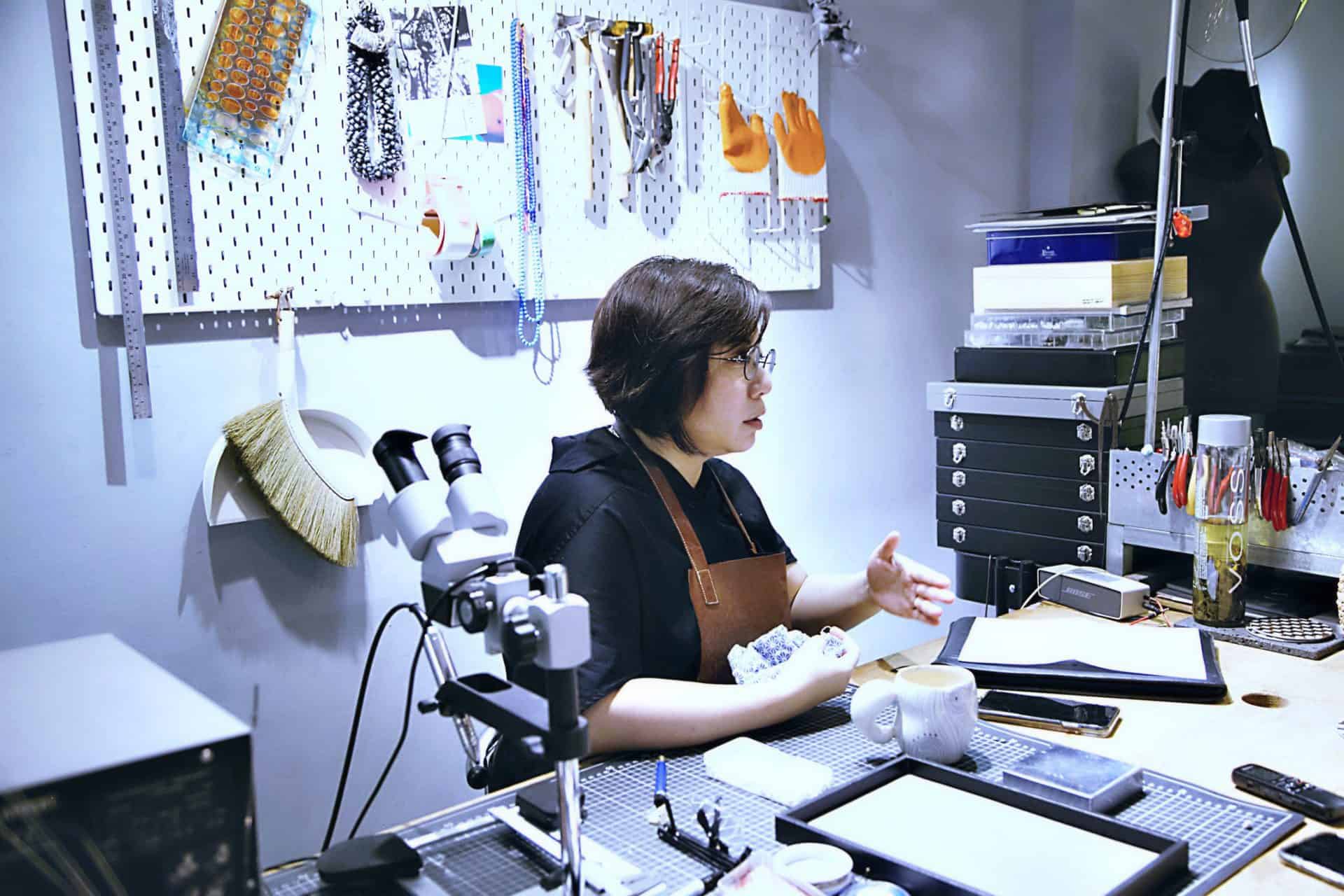
此外,台灣的金工領域仍以小型工作室及個體戶為主。就連材料供貨都缺乏嚴謹的規範和認證,這讓從德國回來的旻玲難以適應。一個產業的完整構建,仰賴供應商、通路商、創作者等不同專業領域的人同心協力,然而台灣人習慣一窩蜂的模仿特定成功案例,最終犧牲了整體環境的多元性。旻玲期待大家都能勇敢嘗試這個社會或產業上欠缺的事,一同讓環境更加活絡。
On the other hand, the Taiwanese metalworking industry comprises mostly small studios and individuals. There are no strict regulations and certificates, even for the material suppliers, making Ming-Ling hard to adapt, based on her German experience. Completing a well-developed industry requires efforts from various fields, such as suppliers, dealers, and creators. However, Taiwanese tend to imitate whatever successful cases showed up and eventually sacrifice the environment’s diversity. Ming-Ling anticipates everyone to endeavor into what the society and industry are short of, and vitalized the environment together.
- Pop Up Asia Trade Fair 亞洲手創展
- 松山文創園區 三、四、五號倉庫
- 2020/11/19(四)~11/22(日)
- 10:00am~6:00pm
- 刷卡購票:https://lihi1.com/eG648



